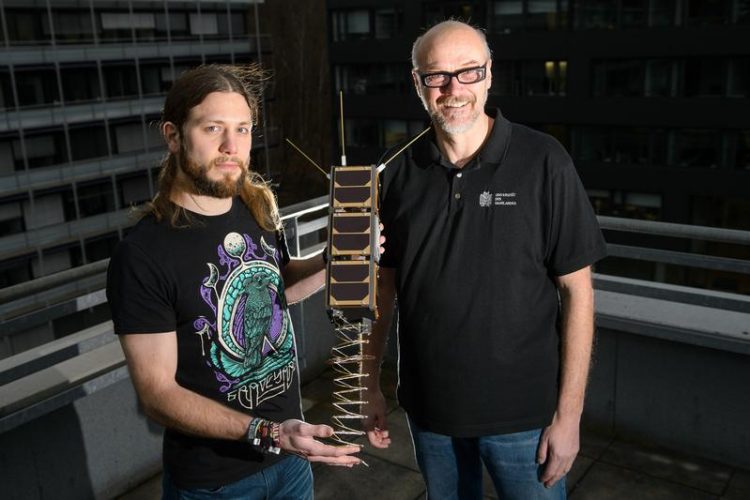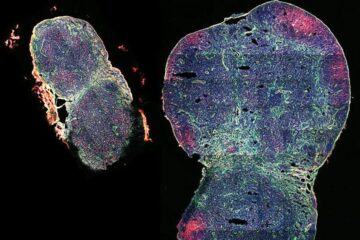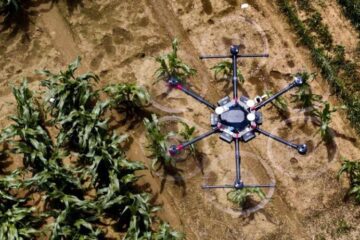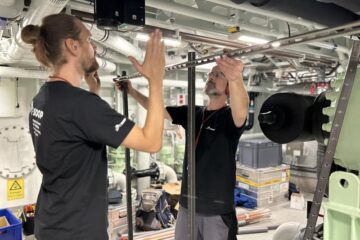From Space to the Streets: New Battery Model also Makes Electric Cars More Reliable

Gilles Nies and Professor Holger Hermanns with the replica of a nano satellite, whose performance can now be determined thanks to their research Oliver Dietze
“As far as we know, there is nothing like it in Earth orbit so far,” says Holger Hermanns, professor of Computer Science at Saarland University. In collaboration with his doctoral student Gilles Nies and student Marvin Stenger, Hermanns has developed a procedure that allows for far more accurate predictions of the amount of battery power needed for a particular operation in space.
Until now, space logisticians have tended to plan with overly large and heavy batteries, conceding valuable space needed for other equipment and experiments. “Amongst other things, not enough attention has been paid to the recovery effect, a phenomenon well-known from mobile phones.
If the phone dies due to an empty battery, it often takes just a few minutes of waiting, then you can turn the phone back on again and use it, for a short time at least,” Hermanns says.
The new battery model can be used to monitor the exact amount of energy currently available, and determine how much of it is present in chemically bound form, that is, not immediately usable. This lets the computer scientists calculate the probability of the battery being discharged at any given moment.
The Saarbruecken computer scientists’ findings can also be applied on Earth. “Batteries are ubiquitous – and a good battery model helps in a lot of situations,” says Holger Hermanns. Consider, for instance, the energy demands of an electric car: “So far, we could only answer the following question: Under ideal conditions, will the battery charge be enough for this electric car to make it to Frankfurt Airport? Now we can see whether the air conditioning system can be operated in such a way that you have a chance greater than 99 percent at all times to make it to your plane in time with the current charge”, explains Hermanns.
Further Information:
Group website “Dependable Systems and Software”:
http://depend.cs.uni-sb.de/
Press photos are available free of charge at www.uni-saarland.de/pressefotos.
Please observe the terms of use.
Media Inquiries:
Professor Holger Hermanns
Dependable Systems and Software
Saarland University
Phone: +49 681 302-5631
E-Mail: hermanns@cs.uni-saarland.de
Editor:
Gordon Bolduan
Competence Center Computer Science Saarland
Phone: +49 681 302-70741
E-Mail: bolduan@mmci.uni-saarland.de
Media Contact
All latest news from the category: Trade Fair News
Newest articles

Expanding a lymph node, boosting a vaccine
A biomaterial vaccine enhances and sustains lymph node expansion following vaccination, boosting anti-tumor immunity in an animal model. Each one of us has around 600 lymph nodes (LNs) – small,…

AI to Make Crop Production More Sustainable
Drones monitoring fields for weeds and robots targeting and treating crop diseases may sound like science fiction but is actually happening already, at least on some experimental farms. Researchers from…

Cruise Ship as Data Collector
New Approaches in Ocean Observation… Scientific research – not only confined to dedicated research vessels but also from non-scientific vessels and marine infrastructures. This is one of the ideas promoted…





















